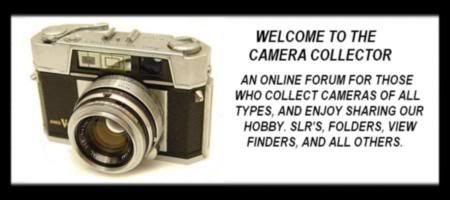Post by PeterW on Nov 9, 2008 17:46:29 GMT -5
Hi all,
We are in November and fast approaching Remberance Day, the 90th anniversary of the signing of the Armistice that ended World War I on November 11 1918.
The UK TV history channels have been putting out a whole host of documentaries about both WW1 and WW2, most that I've seen very well done and informative. But there have been a few minor historical blunders. One quite recently was to refer to the Contax carried by a German Army photographer as a 'Zeiss Contax'. I didn't bother to email the producer. This is a forgivable mistake as many people shorten Zeiss Ikon to just Zeiss.
But in this evening's programme there was what I regard as a more serious historical blunder that has made me have doubts about the accuracy of other statements in the series on which I have no information.
This particular bunder was to carry on the hoary old chestnut about wrist watches (strap watches in the US I believe) being invented for trench warfare in 1915 so that officers could judge the time to 'blow the whistle' for simultaneous attacks along a sector of the front-line trenches without having to fumble for a pocket watch.
Nice story --- if it were true. But it's popular fiction. Rolex went into production with what is usually regarded as the first commercial wrist watch in 1908, and although it probably doesn't count I believe Breguet made a special one-off wristwatch for the Queen of Naples nearly 100 years before that.
The commentator also made reference to the 'necessity for split-second timing'. Rubbish! No lever-escapement wrist watch of this period could be relied upon to keep time to within 15 or 20 seconds in 24 hours. Yes, Rolex produced a chronograph wrist watch around this period capable of high accuracy, but the quality of watches bought by Governments to issue to senior officers in WW1, though good quality, were not Rolex Chronographs. I know, because I've got one, dated 1914 by its hall-marked silver case, left over from the days when I collected vintage watches.
OK, I'm well-known as a nit-picking old busybody, but surely in a programme desgned to go out to colleges and schools as well as the general public, one of the 20 or so researchers listed in the credits should have picked up this dating blunder.
I'm waiting for them to make a programme about the history of photography and cameras. Any major blunders in that and I'll really go to town with the letters and emails .
.
PeterW
We are in November and fast approaching Remberance Day, the 90th anniversary of the signing of the Armistice that ended World War I on November 11 1918.
The UK TV history channels have been putting out a whole host of documentaries about both WW1 and WW2, most that I've seen very well done and informative. But there have been a few minor historical blunders. One quite recently was to refer to the Contax carried by a German Army photographer as a 'Zeiss Contax'. I didn't bother to email the producer. This is a forgivable mistake as many people shorten Zeiss Ikon to just Zeiss.
But in this evening's programme there was what I regard as a more serious historical blunder that has made me have doubts about the accuracy of other statements in the series on which I have no information.
This particular bunder was to carry on the hoary old chestnut about wrist watches (strap watches in the US I believe) being invented for trench warfare in 1915 so that officers could judge the time to 'blow the whistle' for simultaneous attacks along a sector of the front-line trenches without having to fumble for a pocket watch.
Nice story --- if it were true. But it's popular fiction. Rolex went into production with what is usually regarded as the first commercial wrist watch in 1908, and although it probably doesn't count I believe Breguet made a special one-off wristwatch for the Queen of Naples nearly 100 years before that.
The commentator also made reference to the 'necessity for split-second timing'. Rubbish! No lever-escapement wrist watch of this period could be relied upon to keep time to within 15 or 20 seconds in 24 hours. Yes, Rolex produced a chronograph wrist watch around this period capable of high accuracy, but the quality of watches bought by Governments to issue to senior officers in WW1, though good quality, were not Rolex Chronographs. I know, because I've got one, dated 1914 by its hall-marked silver case, left over from the days when I collected vintage watches.
OK, I'm well-known as a nit-picking old busybody, but surely in a programme desgned to go out to colleges and schools as well as the general public, one of the 20 or so researchers listed in the credits should have picked up this dating blunder.
I'm waiting for them to make a programme about the history of photography and cameras. Any major blunders in that and I'll really go to town with the letters and emails
 .
.PeterW





